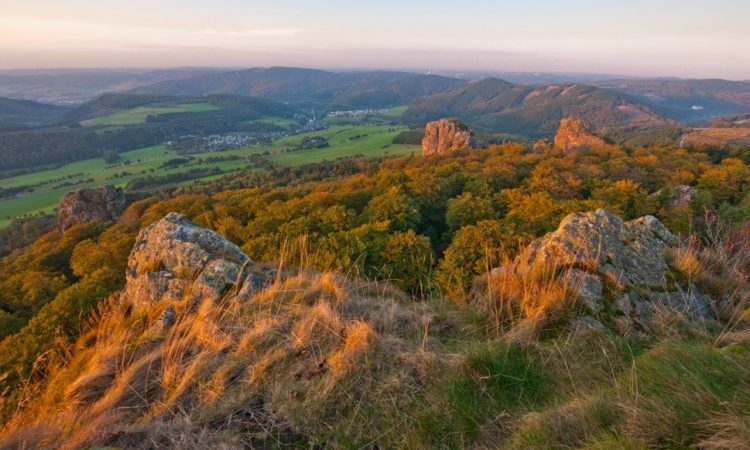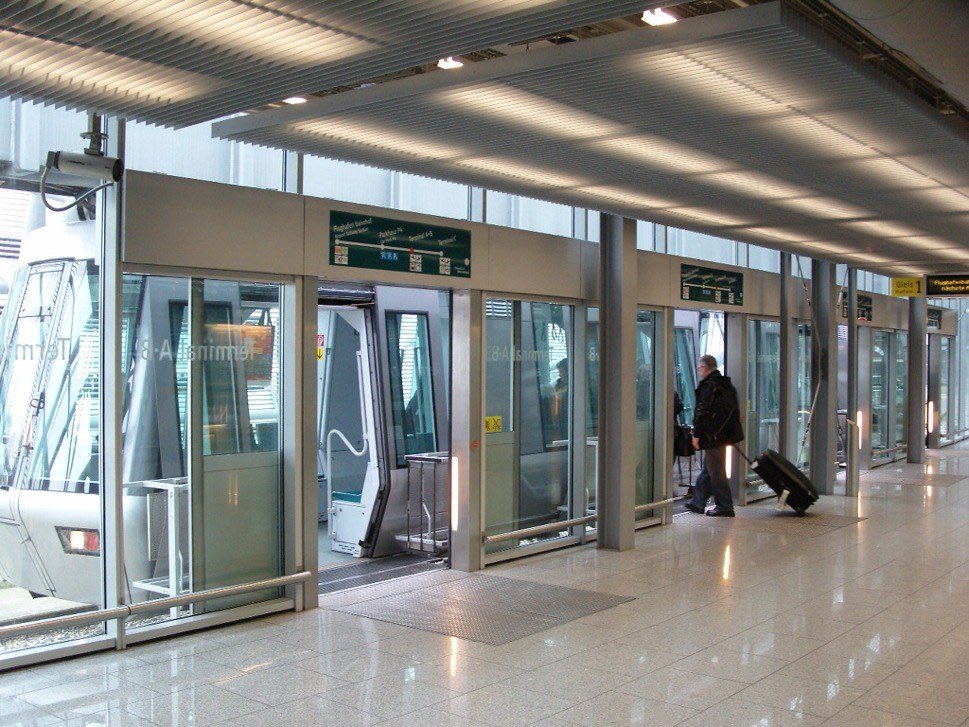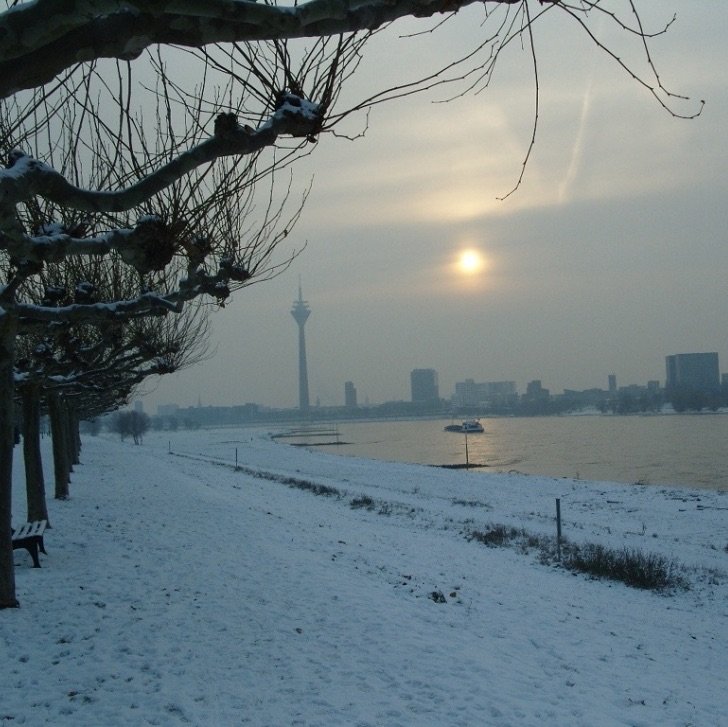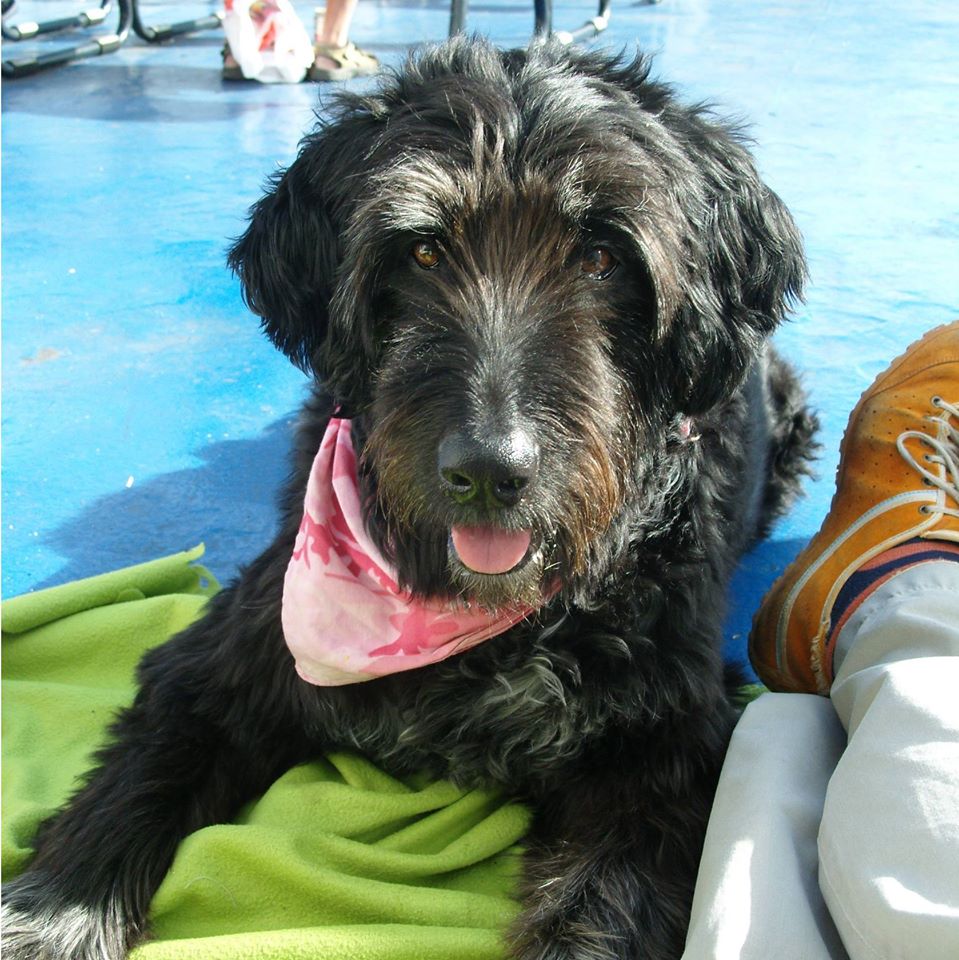State
GEOGRAPHY OF NRW

North-Rhine Westphalia, NRW, is Germany’s largest federal state by population. In contrast, with 650,000 residents, the state capital Düsseldorf is one of the smallest. And with some 34.086 square kilometres, it’s the fourth largest by area. This makes it a little larger than the state of Maryland in the United States or half the size of Scotland, for instance. From North to South it spans 243 kilometres and from West to East 252 kilometres.
The centre of NRW, with the coordinates 51° north and 7° east, lies to the South of Dortmund Aplerbeck. NRW borders on Belgium and the Netherlands as well as the federal states of Hessen, Rhineland-Palatinate and Lower Saxony. The state is divided into three distinct areas: the Rhineland, Westphalia and the Lippe region. Green meadows and woodlands in the lowlands of Westphalia and the Lower Rhine region characterise the north. The hilly regions of the Sauerland, Bergisches Land, Siegerland and parts of the Eifel mark the South.
North-Rhine-Westphalia has a moderate climate and is home to typical continental European vegetation. The annual average temperature is 5° Celsius and the average rainfall about 1450 millimetres. Summer temperatures can reach a humid mid thirties. The heart of the state is the Rhine-Ruhr agglomeration with its twenty towns and cities, one of the largest urbanised areas in the world.
Forty-four rivers run through NRW, of which the majestic Rhine, industrious Ruhr and meandering Lippe are the most important. Of its two hundred mountains the Kahler Asten with 841,9 metres is NRW’s highest and, due to its weather station, one of the most well known in Germany. With so much to see, it is not surprising that tourism in the region is popular too. Among its eighteen million residents and beyond.
By Philipp Schiwek, Jul 3 2020

PUBLIC TRANSPORT
The public transport system in the city is safe and normally efficient. A dense network of trams above and below ground as well as buses serve the city and its suburbs. Links via the S-Bahn train system reach further outlying areas and neighbouring communities.

AIRPORT GETAWAY
Located a mere ten kilometres from the city centre, Düsseldorf has one of the world’s most accessible airports. Times for taxi rides can vary enormously depending on the time of day. Public transport includes an S-Bahn train to the terminal, rail to the Skytrain connection or busses.
Society & Folk
Society and folk in Germany is often hotly debated and opinions divided. However, anyone who has experienced the hospitality offered in this culture knows more. Germans are more laid back than first meets the eye. Life in Germany as a whole and Düsseldorf especially is peaceful.





